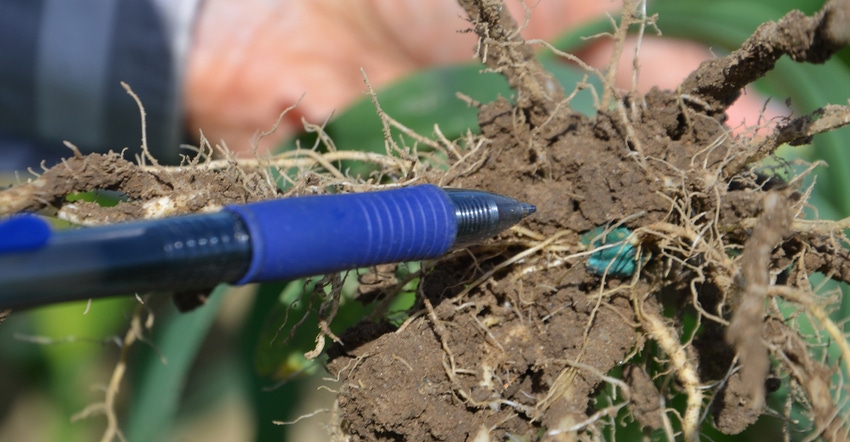
A grandfather helped his grandson bring corn plants into the county fair building for judging this summer. Each one toted a 5-gallon bucket with a stalk of corn, almost ready to tassel, inside. The 4-H’er had cut off a third stalk about 2 feet off the ground, as directed by the county 4-H rules, and placed it upside down in one of the buckets, with the roots pointing upward.
After the judge talked with the 4-H’er and evaluated the corn, the grandfather walked up near him. It was clear he had something to say.
Related: Tale of 2 seasons for emergence
“This was a learning experience for me, too,” he said. “I had never washed off roots on plants this size before and looked closely at them. I was amazed to find the seed we planted still there, right in the middle of the roots underground.
“It’s such a tiny seed, and yet it grows a big plant. That is truly amazing.”
It was a teachable moment not only for the 4-H’er, but also for the grandfather. Perhaps agronomists and corn breeders take this miracle for granted. Not everyone sees corn roots up close and personal.
“The corn seed that is planted provides food for the corn plant until it can feed itself,” says Dave Nanda, director of genetics for Seed Genetics Direct, sponsor of Corn Watch ’22. “Then it stays right there and remains intact. If diseases or insects don’t harm it, the seed will remain there for a long time.”
Checking seed depth
With 200-bushel-per-acre corn, one seed may yield an ear with 700 or more kernels. That’s a mighty feat of nature, a 700-to-1 return, Nanda notes.
Besides being something to admire, there is a practical side to finding a seed within the corn roots.
“You can always go back and determine planting depth precisely at any point in the season,” Nanda says. “Unless something happens to the seed, it will be there, and it will remain at the exact same spot it was placed by the planter.”
To measure seeding depth in corn, carefully dig up a plant and locate the seed within the roots, Nanda says. Then measure the distance from the seed to the point where the stem emerged through the ground. The difference between the seed and where the stem sat at ground level will be the original seeding depth.
Sometimes heavy rains after planting result in soil washing in over the seed, making it farther from the soil surface than it was before. The seed didn’t move — the top of the soil profile changed instead, even if only temporarily, Nanda explains.
If rains run down the row after planting and erode soil, the opposite effect can happen. Seed might wind up shallower than it was planted. These outside impacts can affect how far the seed is below the surface, but the actual planting depth did not change. The seed does not move, Nanda concludes.
About the Author(s)
You May Also Like




